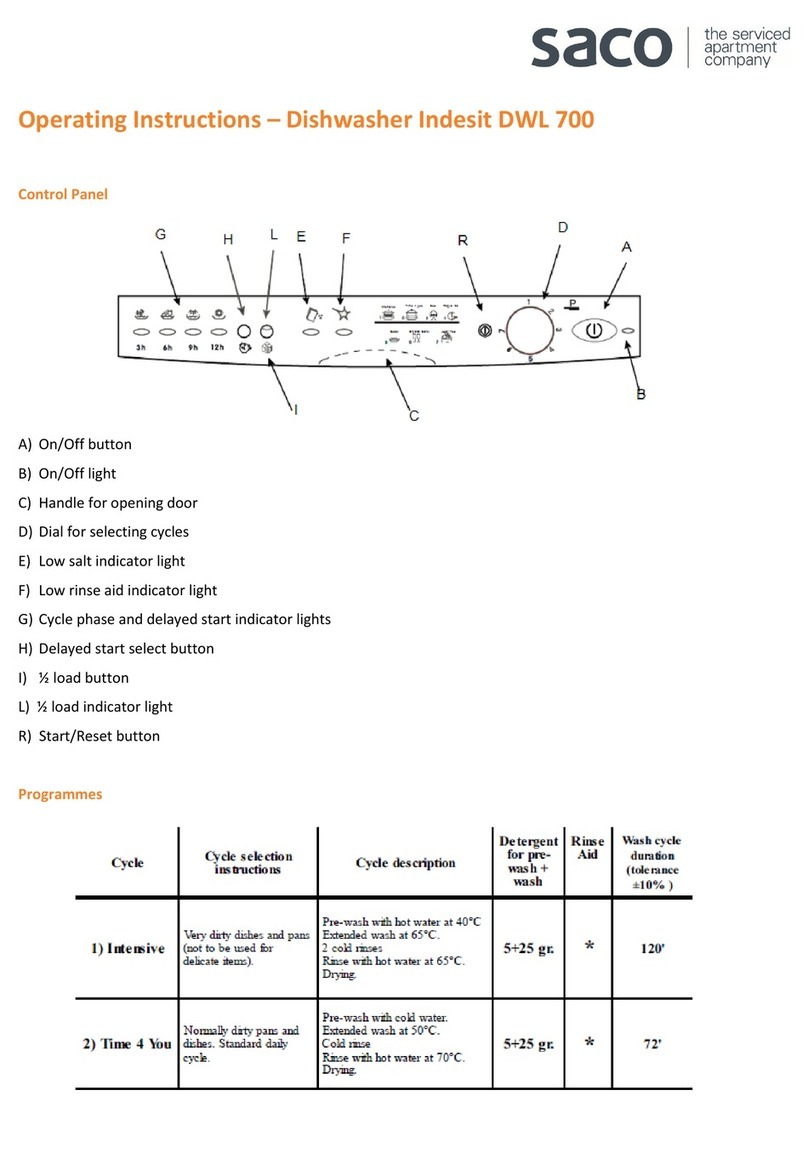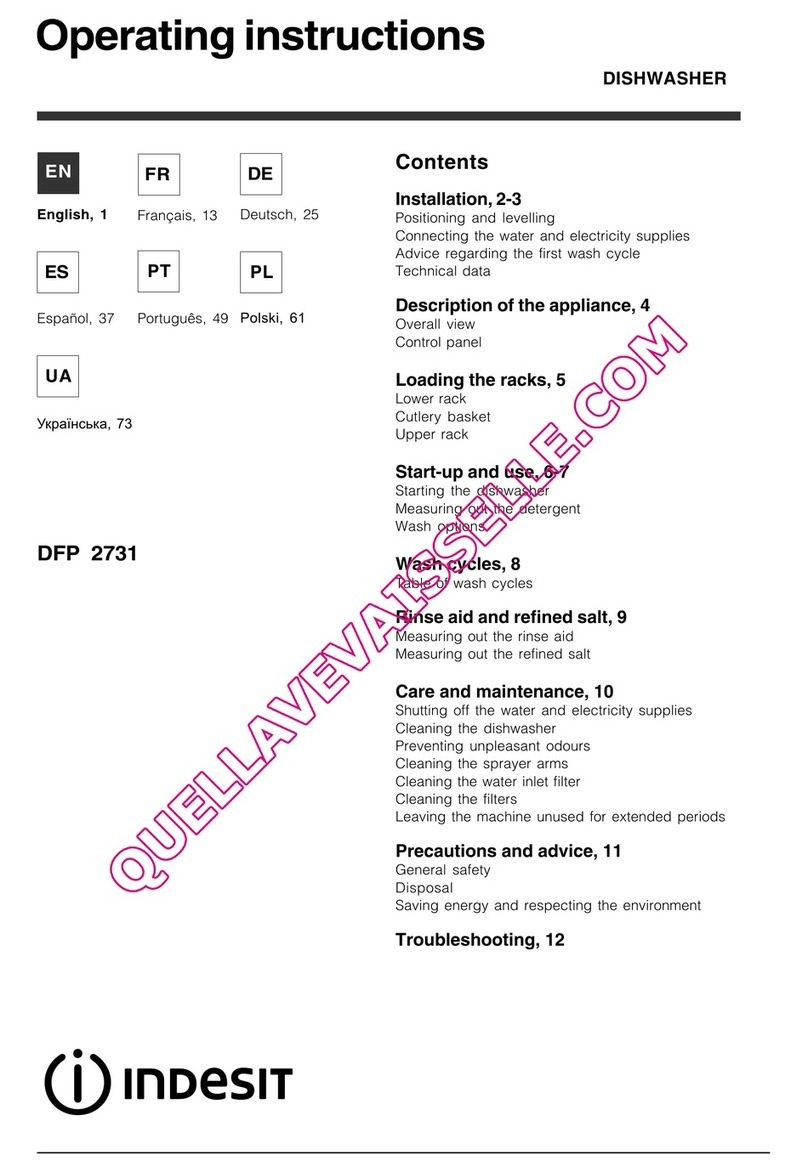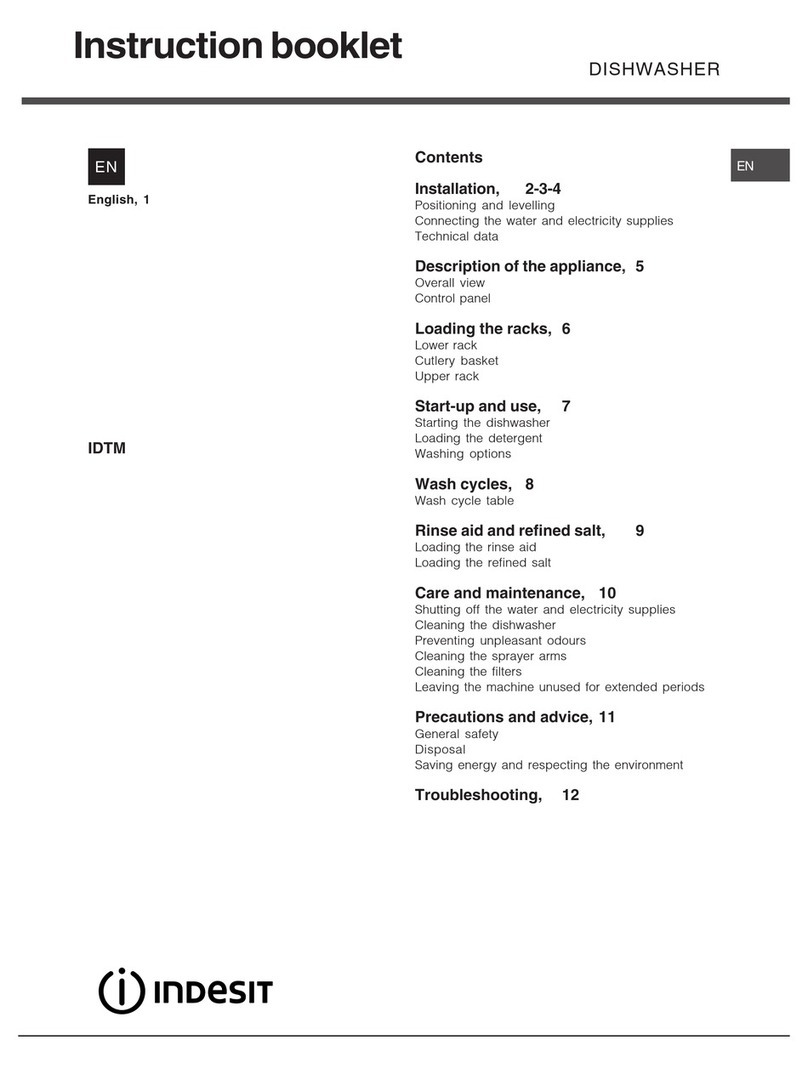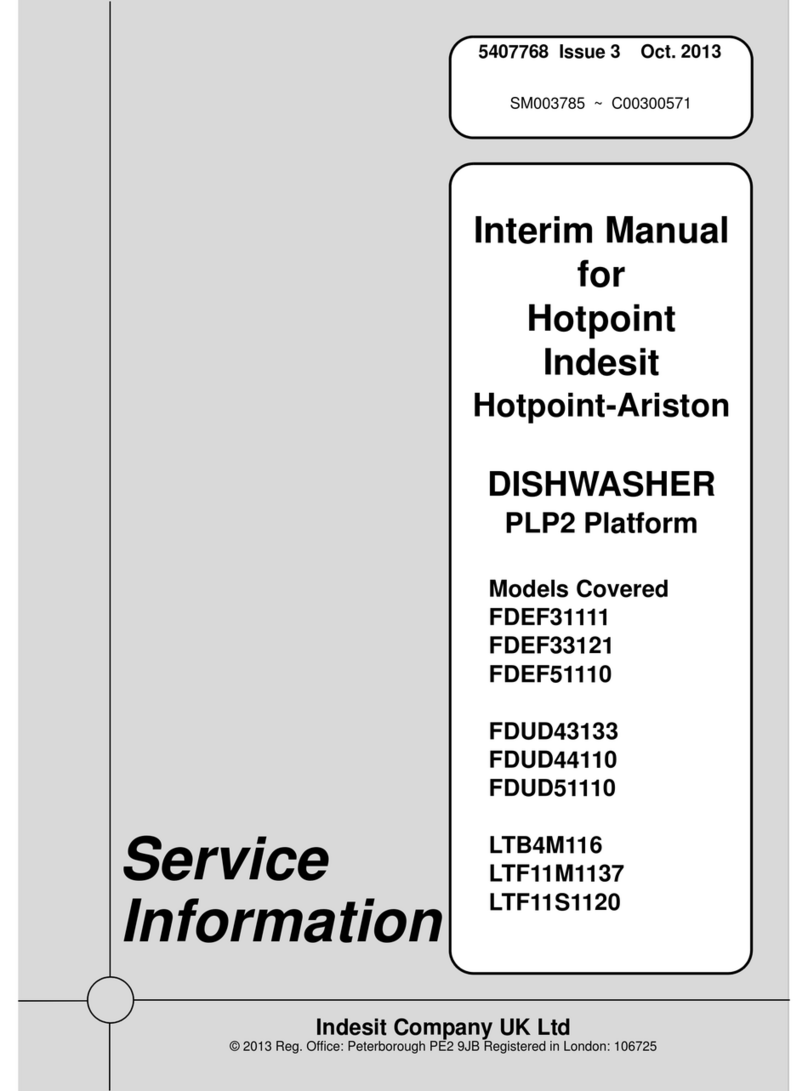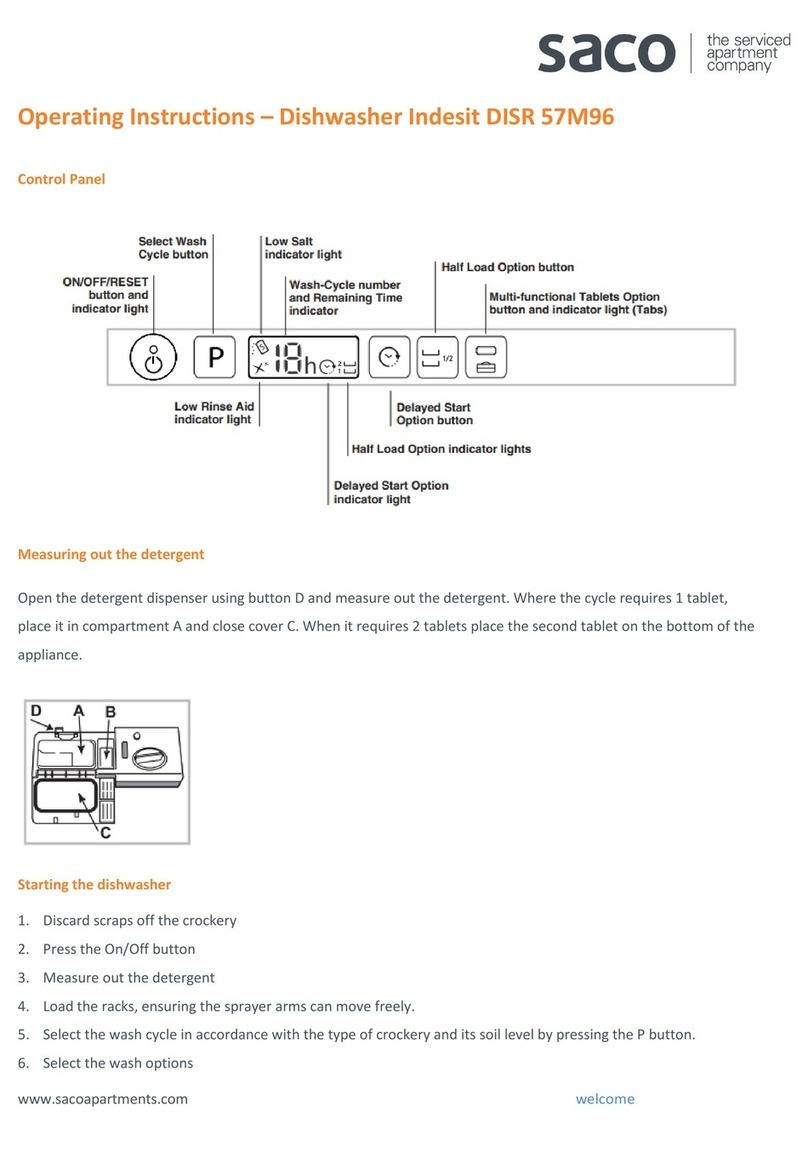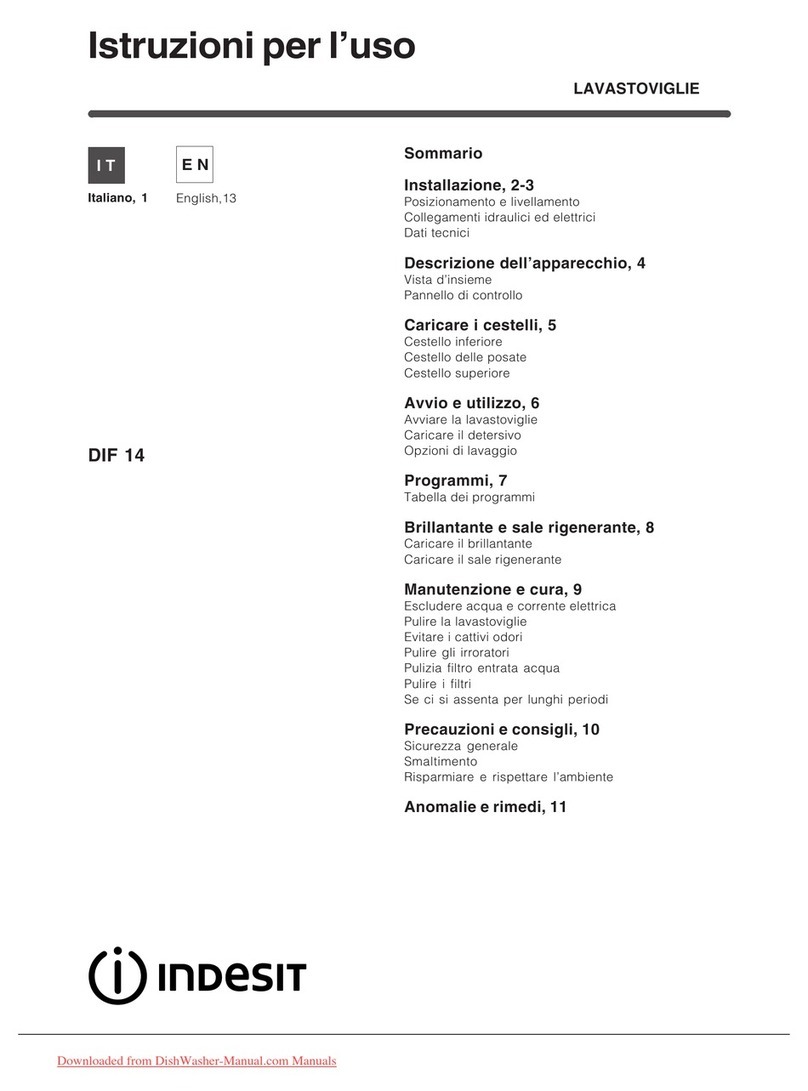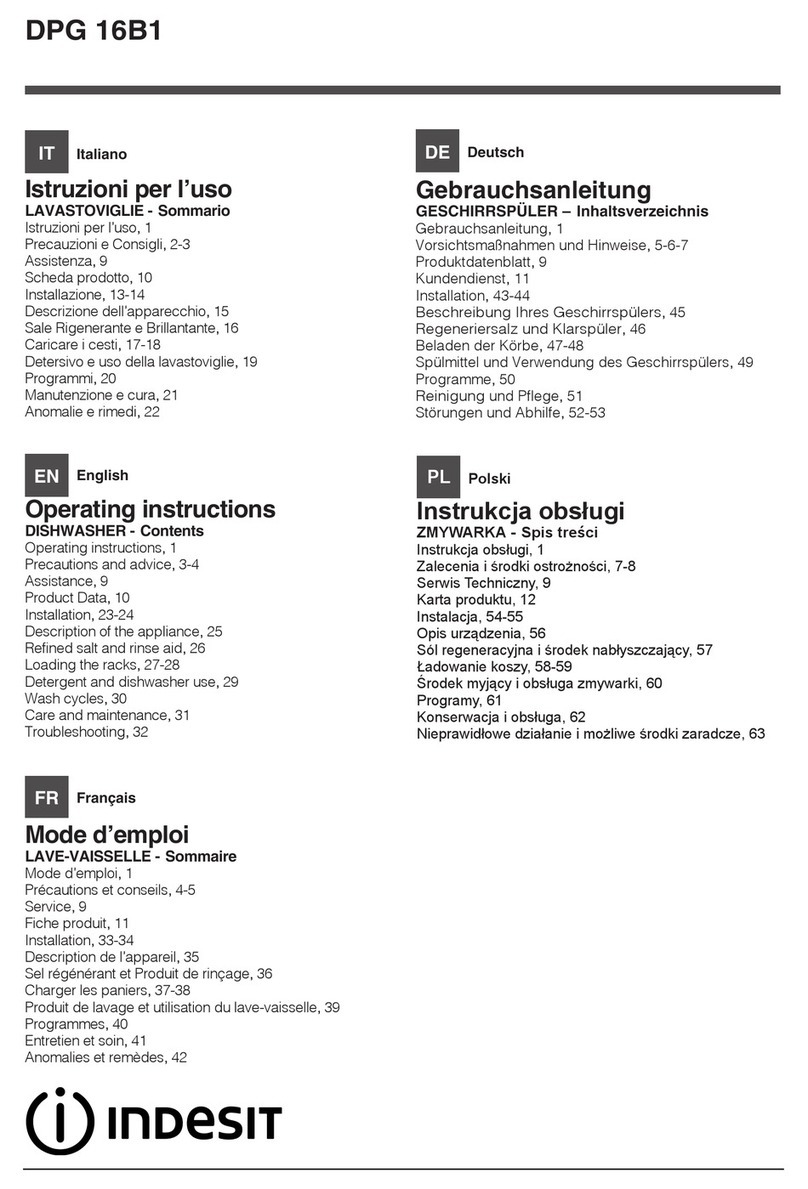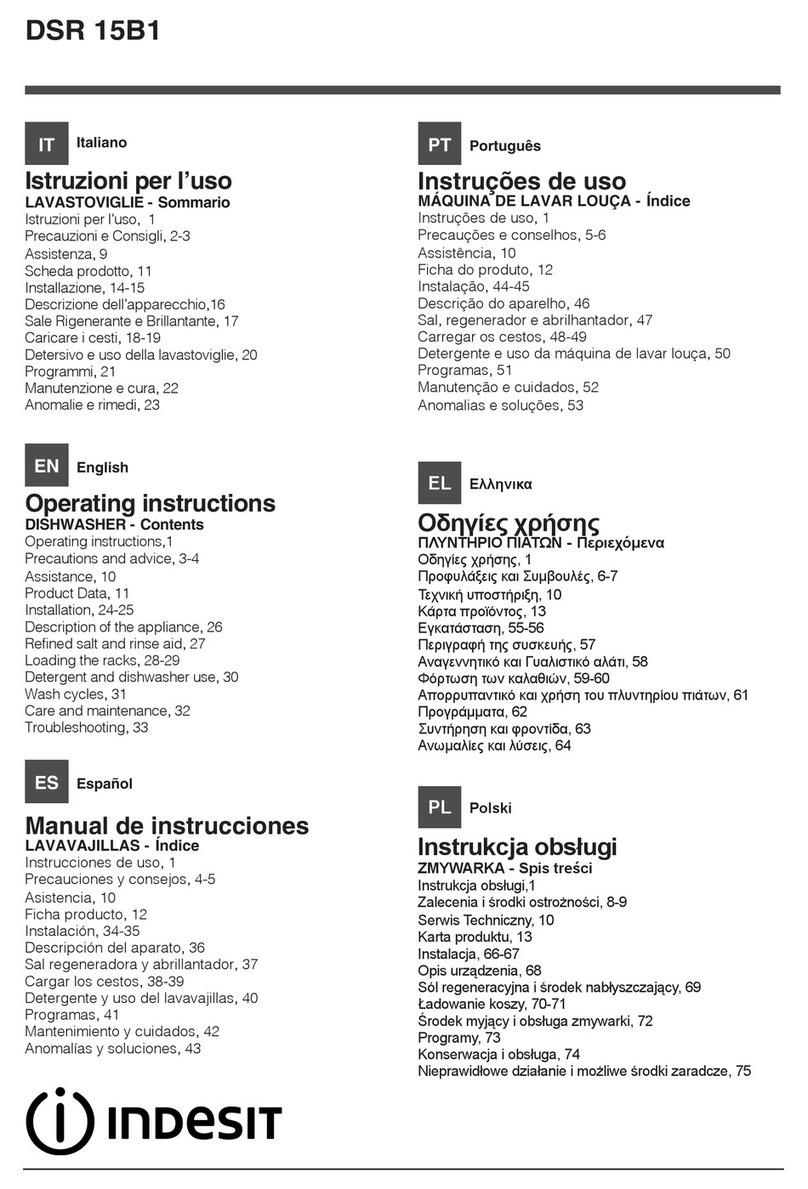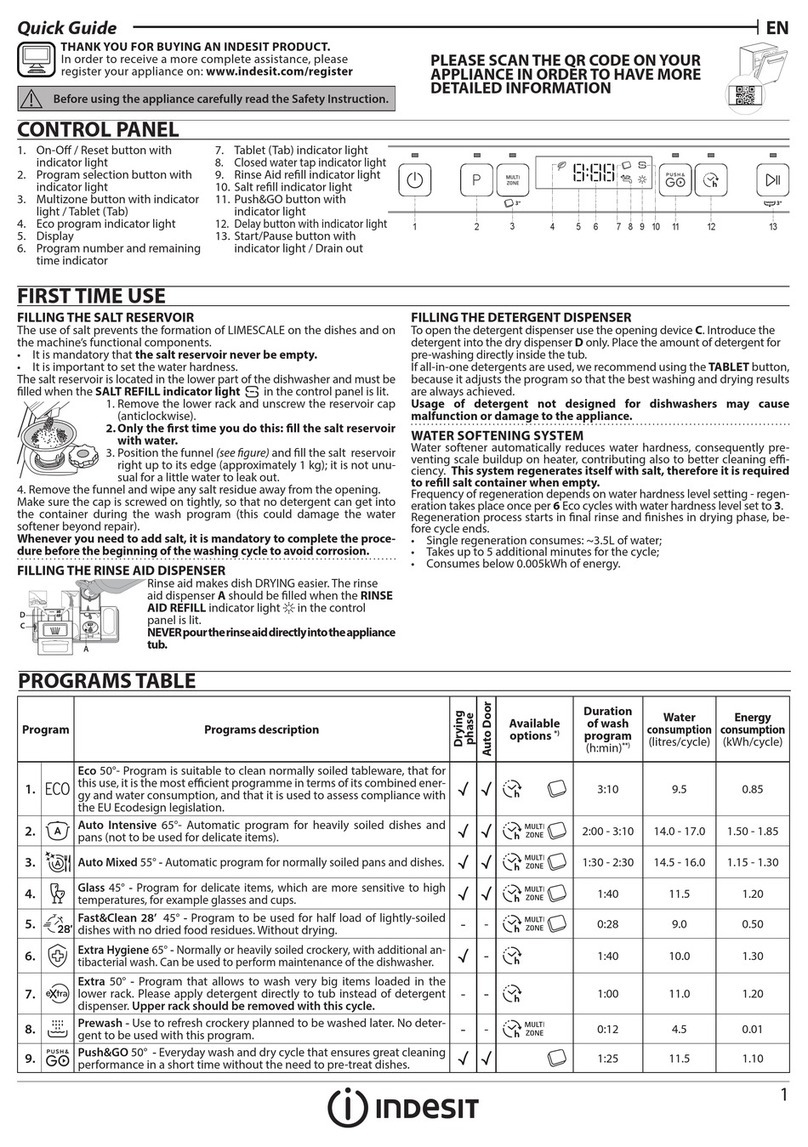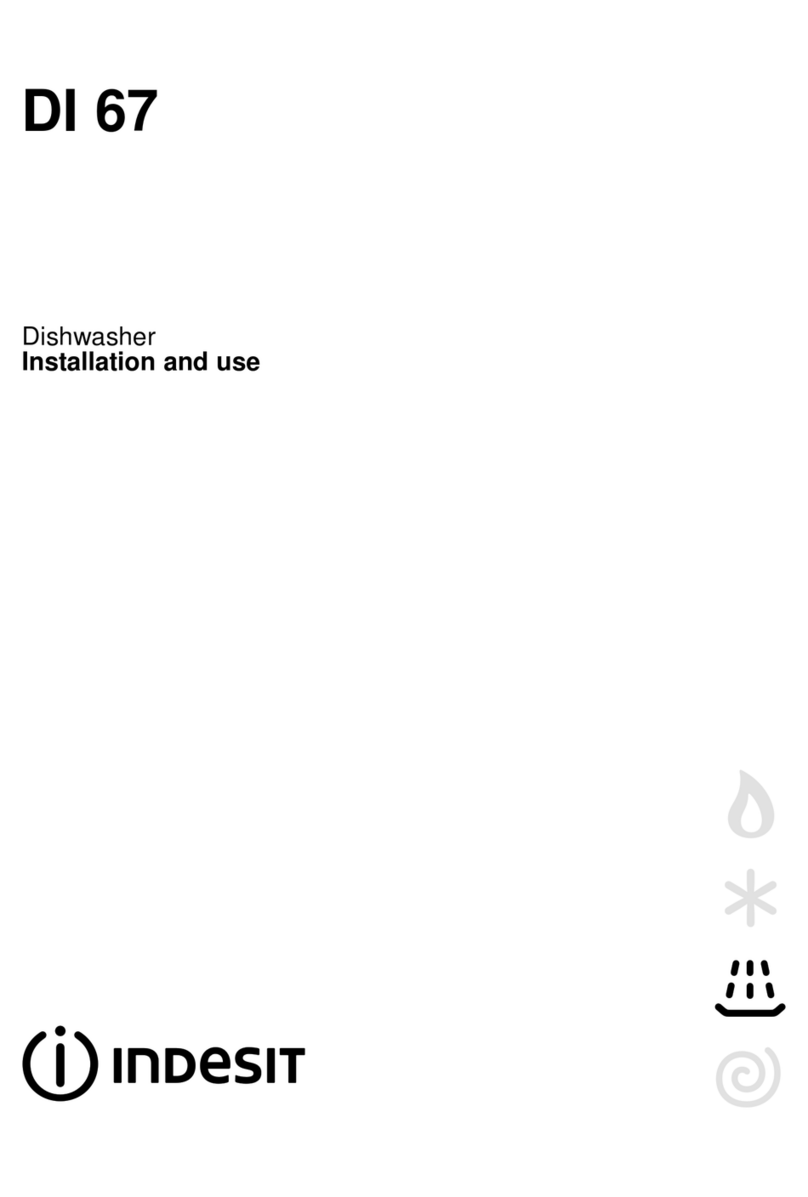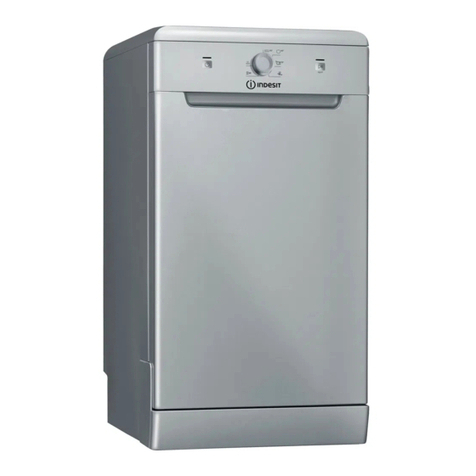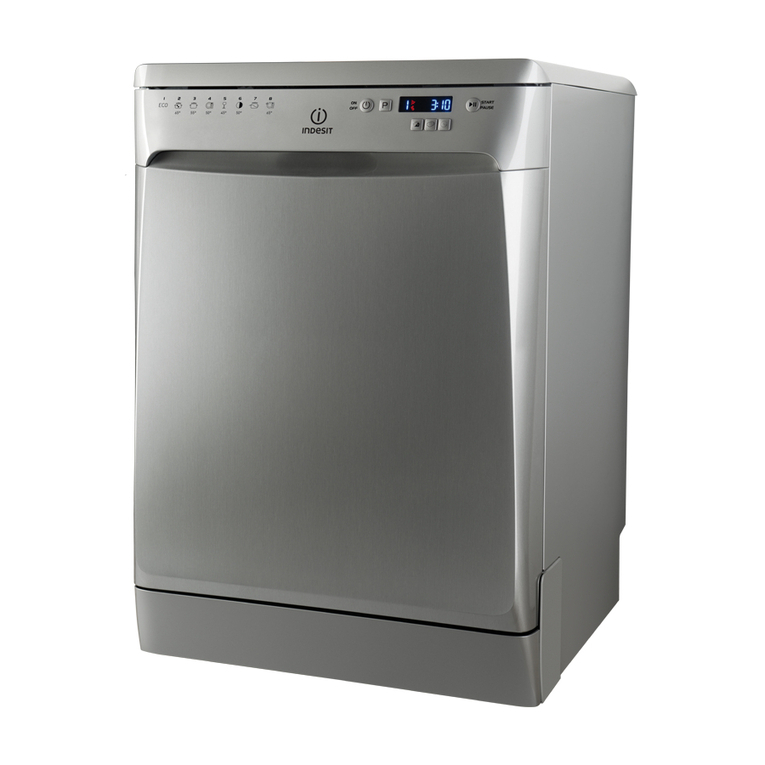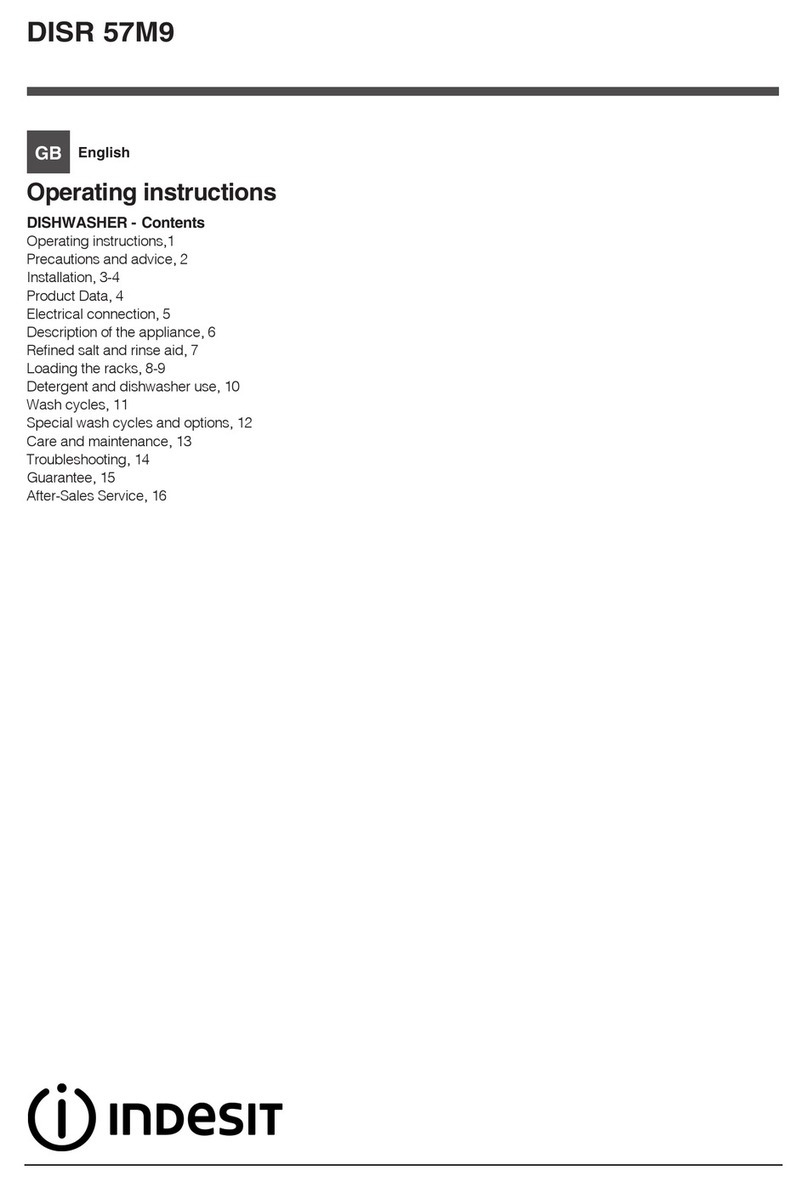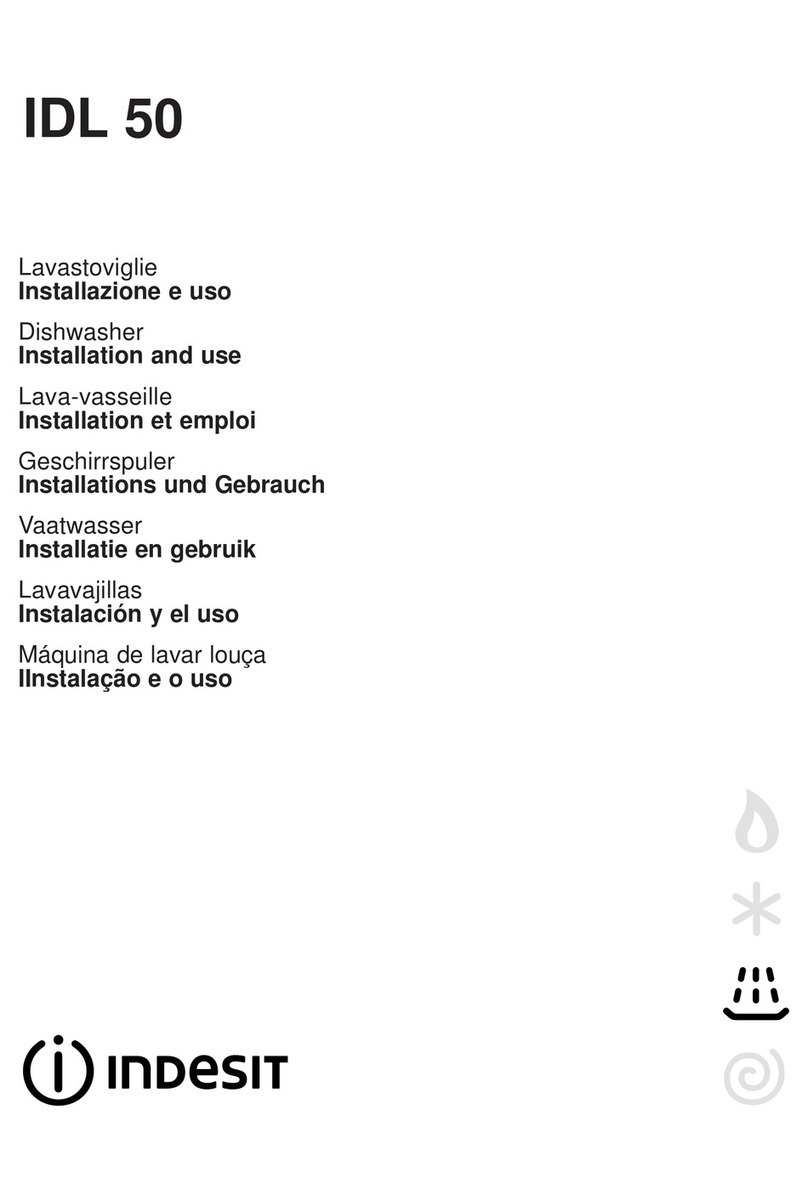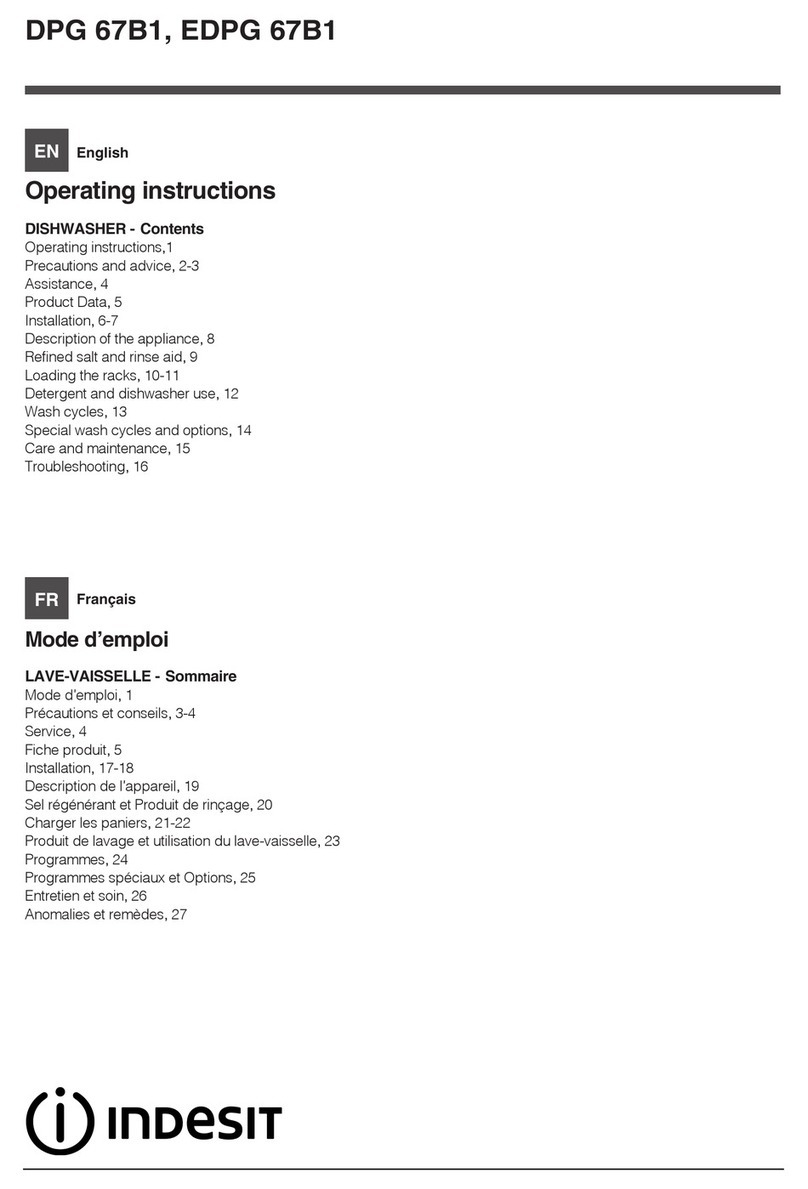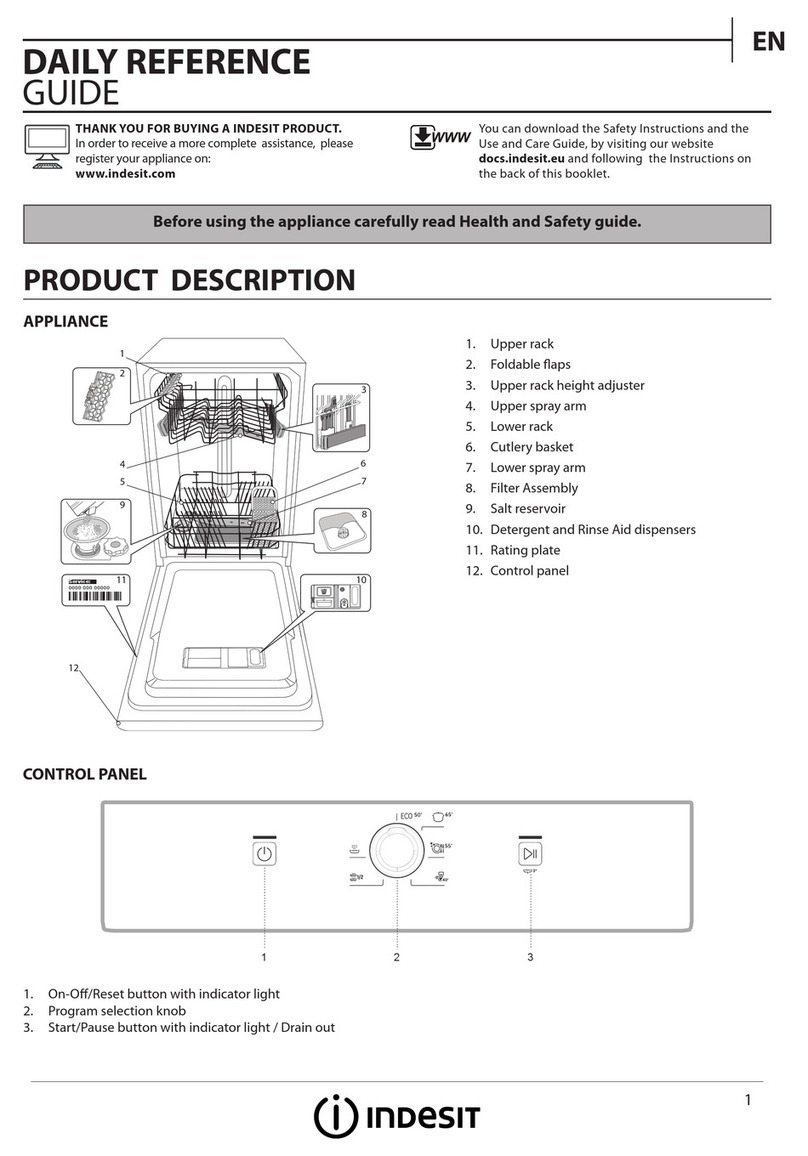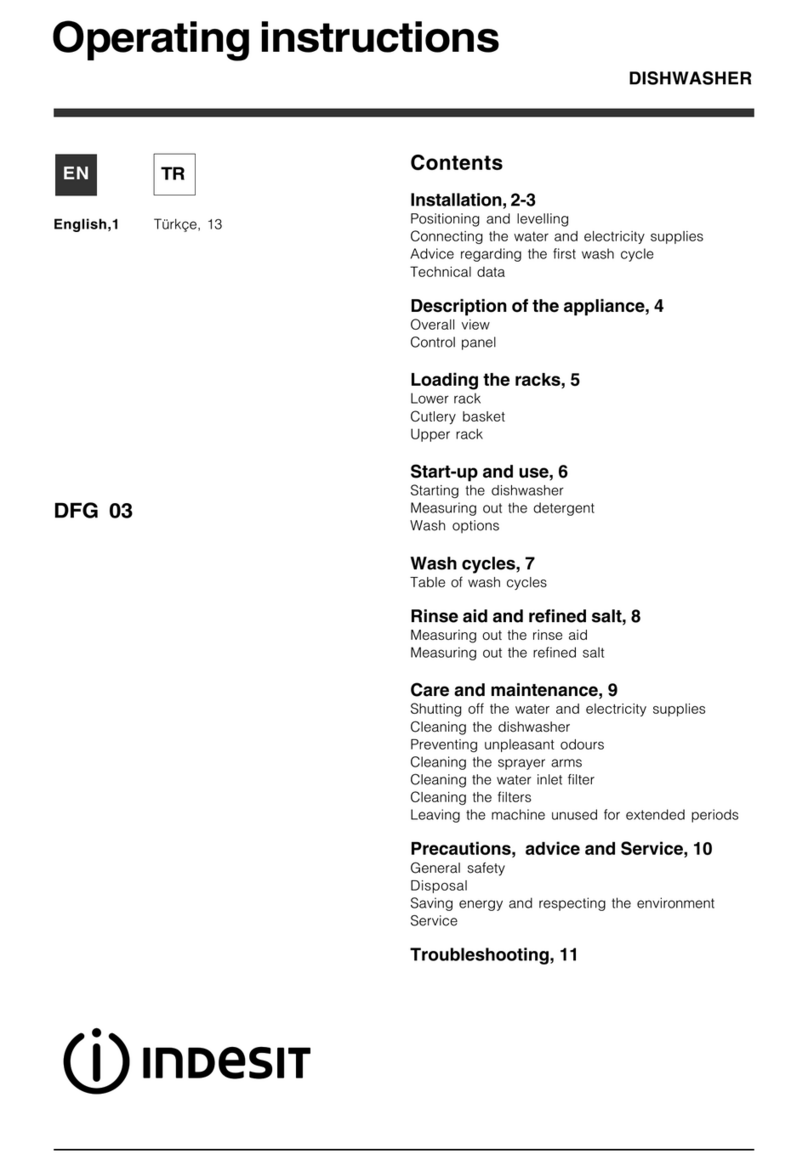
8
IT
Brillantanteesale
rigenerante
G
F
Usare solo prodotti specifici per lavastoviglie.
Non usare sale alimentare o industriale nè detersivi
per il lavaggio a mano.
Seguire le indicazioni riportate sulla
confezione.
Se si usa un prodotto multifunzione, non è necessario
aggiungerebrillantante,si consiglia invece diaggiungere sale,
specie se l’acqua è dura o molto dura. Seguire le indicazioni
riportatesulla confezione.
Non aggiungendo né sale né brillantante è
normale che le spie MANCANZA SALE*e
MANCANZA BRILLANTANTE*rimangano accese.
Caricare il brillantante
Ilbrillantantefacilital’asciugatura dellestovigliefacendo scivolare
l’acqua dalla superficie, così che non rimangano striature o
macchie.
Ilserbatoio del brillantanteva riempito:
• quando sul pannello si accende la spia MANCANZA
BRILLANTANTE*;1. Aprire il serbatoio ruotando il
tappo (G) in senso antiorario.
2. Versare il brillantante evitando
che fuoriesca. Se accade, pulire
subitocon un panno asciutto.
3.Riavvitare il tappo.
Non versare MAI il brillantante
direttamente all’interno della
vasca.
Regolare la dose di brillantante
Se non si è soddisfatti del risultato dell’asciugatura, è possibile
regolare la dose di brillantante. Con un cacciavite girare il
regolatore(F)scegliendotra6 posizioni(laregolazionedifabbrica
è sul 4):
• sesulle stoviglie ci sonostriature, girare verso inumeri bassi
(1-3).
• seci sono gocced’acqua o macchiedi calcare girareverso i
numerialti (4-6).
Impostazione durezza dell’acqua
Ognilavastoviglie ècorredata diun dolcificatoredell’acqua che,
utilizzandodel salerigenerante specifico perlavastoviglie, forni-
sceacqua priva di calcare peril lavaggio delle stoviglie.
Questa lavastoviglie, consente una regolazione che riduce
l’inquinamentoed ottimizzale prestazioni di lavaggio infunzione
della durezza dell’acqua. Il dato è reperibile presso l’Ente
erogatoredell’acqua potabile.
-- Aprire la porta ed accendere la macchina premendo il tasto
ON/OFF.
-Premere il tastoPper circa 5secondi; si sentono duebip brevi
e lampeggia lentamente sul display il numero di regolazione di
durezzaimpostato (Ildecalcificatore è impostatodi fabbrica sul
n°3).
- Premere il tasto Pin successione fino al raggiungimento della
durezza desiderata (1-2-3-4-5
Vedi tabella durezza acqua
).
- Per uscire dalla funzione attendere alcuni secondi o premere
un tasto delle opzioni*o spengenere la macchina con il tasto
ON/OFF.
Se si utilizzano le pastiglie multifunzione, riempire comunque il
serbatoiodel sale.
(°dH=durezza ingradi tedeschi-°fH =durezza ingradifrancesi
-mmol/l= millimol/litro)
Caricare il sale rigenerante
Per avere buoni risultati di lavaggio è indispensabile verificare
che il serbatoio del sale non sia mai vuoto. Il sale rigenerante
eliminailcalcaredall’acqua,evitandochesidepositisullestoviglie.
Ilserbatoiodel saleèposto nellaparteinferioredella lavastoviglie
(
vedi Descrizione
)e va riempito:
• quando il galleggiante verde*non è visibile osservando il
tappodel sale;
• quandosul pannello siaccende la spiaMANCANZA SALE*;
1. Estrarre il cesto inferiore e svitare il tappo
delserbatoio in senso antiorario.
2.Soloperil primoutilizzo:riempireilserbatoio
diacqua fino al bordo.
3.Posizionarel’imbuto*(
vedifigura
)eriempire
il serbatoio di sale fino al bordo (circa 1 kg); è normale che
trabocchiun po’ d’acqua.
4. Togliere l’imbuto*, eliminare i residui di sale dall’imbocco;
sciacquare il tappo sotto l’acqua corrente prima di avvitarlo,
disponendoloatestaingiùefacendodefluirel’acquadalle quattro
fessure disposte a stella nella parte inferiore del tappo. (tappo
congalleggiante verde*)
E’ consigliabile effettuare questa operazione ad ogni
caricamento del sale.
Chiuderebene iltappo,affinché nelserbatoio nonentridetersivo
durante il lavaggio (potrebbe danneggiarsi irrimediabilmente il
dolcificatore).
Quando si rende necessario, caricare il sale prima di un
ciclo di lavaggio in modo da eliminare la soluzione salina
traboccatadal contenitore delsale.
*Presente solosu alcuni modelli.
Tabella Durezze Acqua Autonomia media**
contenitore sale
livello °dH °fH mmol/l mesi
1 0 - 6 0 - 10 0 - 1 7 mesi
2 6 - 11 11 - 20 1,1 - 2 5 mesi
3 12 - 17 21 - 30 2,1 - 3 3 mesi
4 17 - 34 31 - 60 3,1 - 6 2 mesi
5*
34 - 50
61 - 90
6,1 - 9
2/3 settimane
Da 0°f a 10°f si consiglia di non utilizzare sale.
* con impostazione 5 la durata può prolungarsi.
** con 1 lavaggio al giorno
